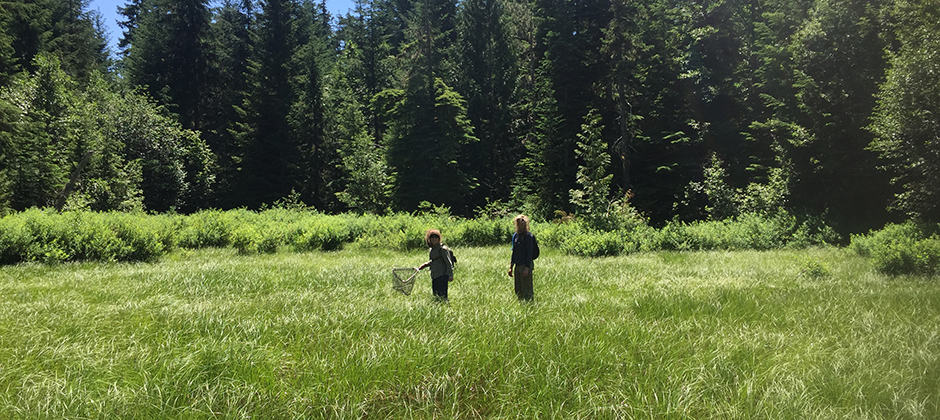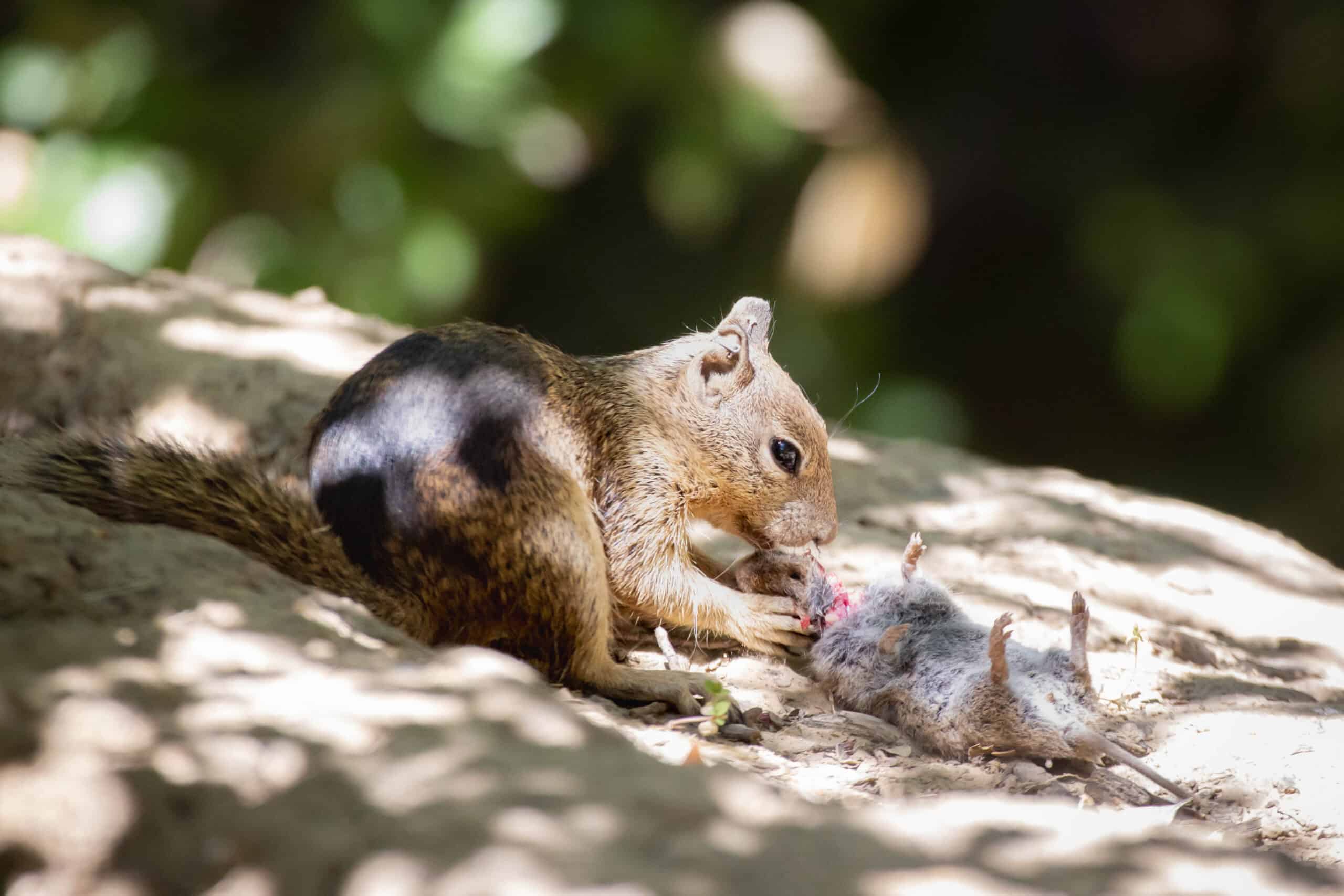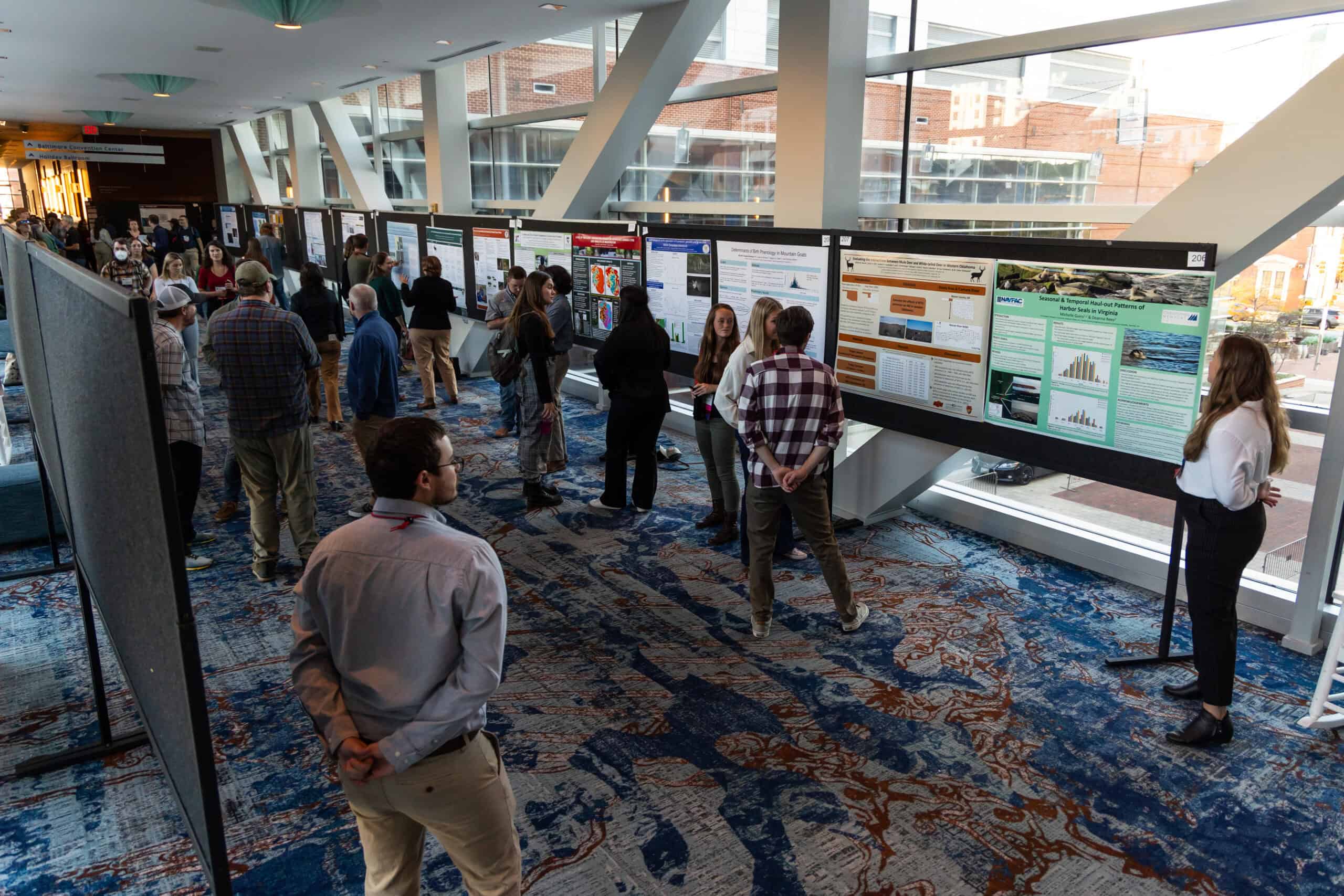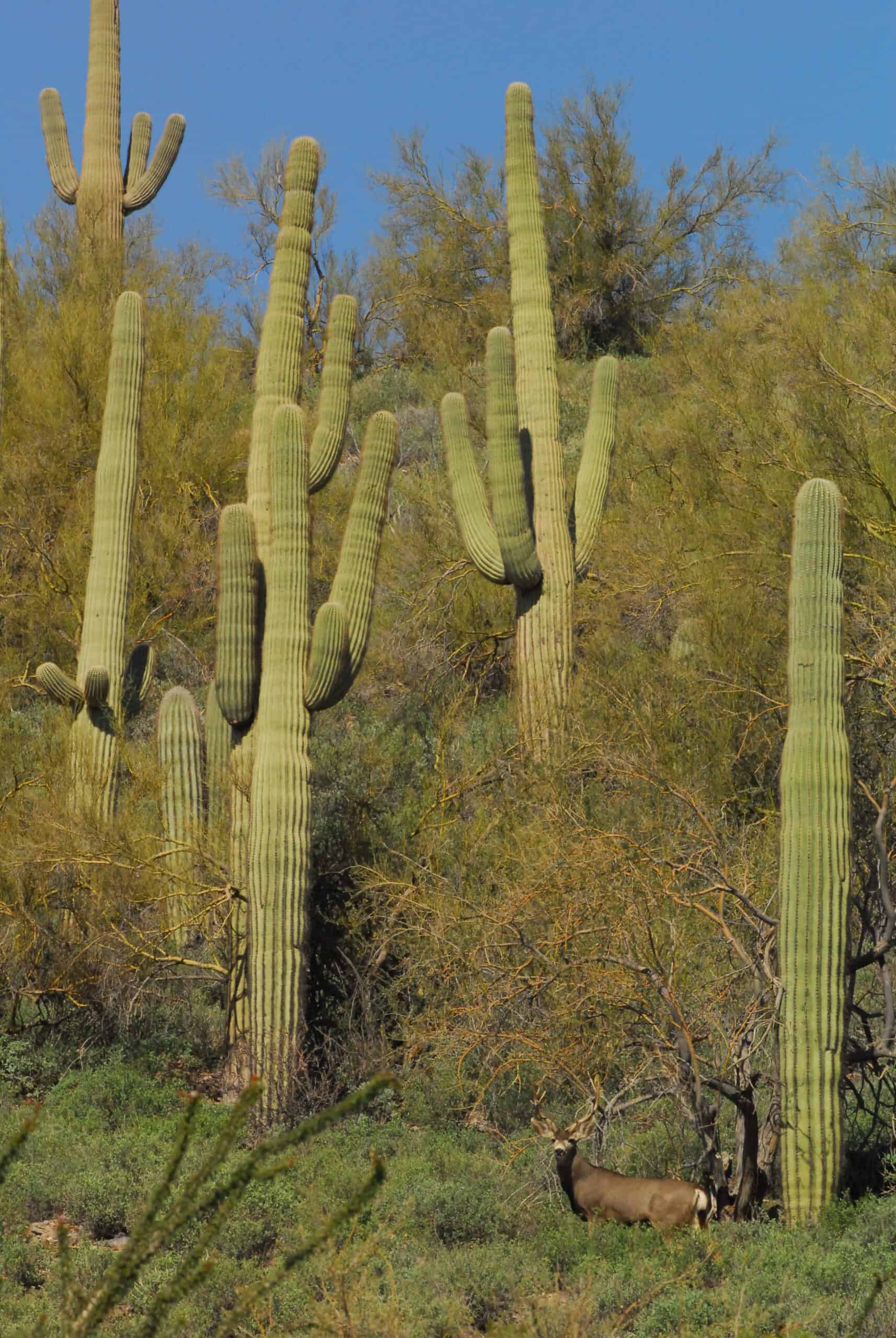Share this article
Leave it to beavers for amphibians
As nonnative trout take exclude imperiled amphibians from lakes and ponds, and climate change causes many of the remaining ones to dry out early in the season, some amphibians are relying on beavers to help create habitat for them in the Gifford Pinchot National Forest of the Cascade Range in Washington state.
“For amphibians up in those high elevations, some of them are impacted by nonnative trout and relegated to marginal shallow water habitat away from where the trout are,” said John Romansic, a postdoctoral researcher at Washington State University. “Those habitats are increasingly imperiled from climate change.”
But at the same time that amphibians are facing these obstacles, managers are relocating beaver populations, which were extirpated from the area through unregulated fur trapping. Romansic led a study published in Freshwater Biology to see if beavers and the dams they create may be having an impact on imperiled amphibians.
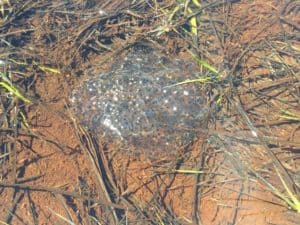
Cascades frog eggs. Credit: John Romansic
To conduct the study, Romansic and his colleagues worked on three different watersheds in the Gifford Pinchot National Forest. Within those watersheds, they chose areas that had plenty of beaver activity as well as areas without any functional beaver dams.
They tried to get to each site right as the snow was beginning to melt, when amphibians are laying their eggs. That required Romansic and his colleagues to backpack to the sites, snowshoeing their way to the watersheds. Sometimes, he and his colleagues would find themselves sinking into beaver canals. “You never know what you’re putting your foot on,” he said. “Sometimes we had to pull each other out of tricky situations.”
Once they got to the sites, they took note of the abundance and species of amphibians they saw — all pond breeders that were mostly terrestrial species. They saw species ranging from northern red-legged frogs (Rana aurora) and northwestern salamanders (Ambystoma gracile) to Pacific tree frogs (Pseudacris regilla), western toads (Anaxyrus boreas),cascades frogs (Rana cascadae), long-toed salamanders (Ambystoma macrodactylum) and rough-skinned newts (Taricha granulosa).
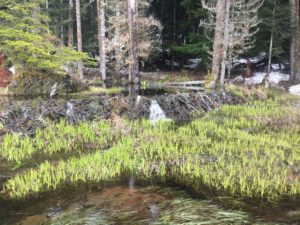
Beaver dams like this one were associated with breeding slow-developing amphibians.
Credit: John Romansic
The team found that slow-developing species — such as northwestern salamanders and red-legged frogs — that take longer to enter each stage of metamorphosis, were strongly associated with beaver dams. Red-legged frogs, for instance, didn’t show up at any of the non-dammed sites.
Romansic thinks that the slow developing species were choosing beaver dams to breed because the dams are known for storing long-lasting water. Slow developers require at least 15 weeks of open water, not covered in ice, he said. “If that pond dries up before they’re able to metamorphose, then they die.” Species like red-legged frogs are also likely to return to their homes to mate and breed. “So if they’re surviving better at their home in these beaver dam sites, they’re going to tend to come back,” he said.
While other research has found that some amphibians are negatively associated with beaver dams, Romansic didn’t find that. That’s good news, he said, because it means reintroducing more beavers in these areas with low population densities is unlikely to negatively impact amphibians.
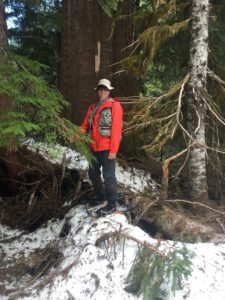
Researcher John Romansic snowshoed to some of the sites in the Gifford Pinchot National Forest to look for amphibians.
Credit: Page Jernigan
Romansic said it’s important to note that this pattern rang true in these three watersheds they studied in the Cascades, and likely is common in other areas like it. In other areas, there are plenty of non-beaver ponds that hold water long enough for the slow developers. In other words, some areas, amphibians may not be as dependent on beaver dams. “I think that some watersheds might be more in need of beavers than others,” he said. Researchers are also currently studying the role of beavers in areas containing nonnative trout. There, beavers might create long lasting water bodies relatively free of fish, or they might just boost the numbers of nonnative trout, Romansic said.
But managers also have to consider the beavers, he said, including the amount of water and morphology of the streams, to make sure they are favorable for the beavers. “Otherwise, they’re not going to persist,” he said.
Fortunately, he said, managers are already choosing reintroduction sites carefully, making sure they are giving the beavers a bit of a head start with food caches or dam analogs, or human-built dams that are meant to mimic beaver dams.
But Romansic said keeping amphibians in mind when conducting these reintroductions is important. “Rapid climate change and the fact that amphibian populations are being affected in many places in the world by infectious diseases shows we can’t be complacent,” he said. “Also, these species are strongly connected to their ecosystem, and these amphibians are food for other species like birds and snakes.”
Romansic said he even saw evidence in the Trout Creek study area that river otters were preying on red-legged frogs and northwestern salamanders at the beaver-dammed sites. “If they become extirpated even locally, you’re going to get effects on the rest of the ecosystem,” he said.
Header Image:
Researchers look for amphibians at an undammed site in the Gifford Pinchot National Forest.
Credit: John Romansic



